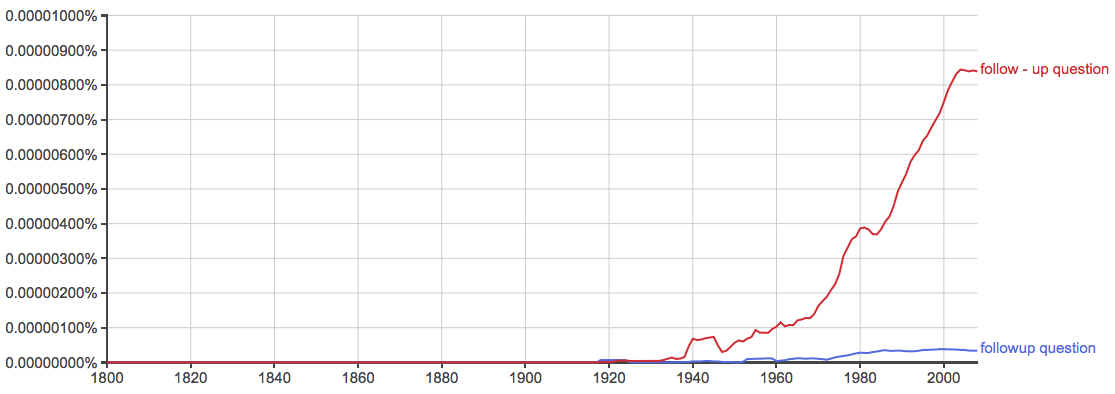Hyphens are a tricky bit of English grammar. Some phrases are hyphenated sometimes but not others, and hyphens are often confused with another thorn in grammarians’ sides, the dash.
The hyphen that makes the difference between follow-up and follow up is one such source of confusion. The phrase is correct both with and without, but when should you use each?
Continue reading to find out.
What is the Difference Between Follow Up and Follow-Up?
In this article, I will compare follow up vs follow-up. I will use each of these variants in an example sentence, so you can see them in context. I will also show you a helpful mnemonic that you can use to remember whether you need follow up or follow-up.
When to Use Follow Up
 What does follow up mean? The unhyphenated follow up functions as a verb, where it means to pursue or to check.
What does follow up mean? The unhyphenated follow up functions as a verb, where it means to pursue or to check.
I have included a few examples here,
- Please follow up with the county to make sure our funding is in place.
- The private detective will follow up on these leads and find more clues.
- I should follow up on my package, to see if it has been delivered yet.
- Joliet will hire an animal compliance coordinator to follow up on dog attacks and other pet disturbances in the city. –The Herald News
When to Use Follow-up
 What does follow-up mean? Follow-up is the noun version of this phrase, meaning a review or continuation. It can also be used as an adjective to describe such an event.
What does follow-up mean? Follow-up is the noun version of this phrase, meaning a review or continuation. It can also be used as an adjective to describe such an event.
Here are some examples,
- The follow-up for the safety audit has been pushed back another week, and we are now out of compliance with state regulations. (Noun)
- Marta, schedule a follow-up meeting with the interns to review company dress code. (Adjective)
- Timothy sent a follow-up email on Monday, but our delegate never responded. (Adjective)
- In a follow-up tweet to his insulting missive Tuesday, Knicks president Phil Jackson indicated Thursday the original was “misunderstood’’ and pleaded for an end to “discord’’ by invoking the Beatles’ peace song “Let it Be.’’ –New York Post (Adjective)
Occasionally, you will see follow-up spelled as a single word, forming followup. This spelling variant is not accepted in formal English, but it has risen slightly in general use.
In this chart, I have isolated the use of follow-up and followup as adjectives. It is not scientific or precise, but it shows that follow-up is much more widely used.

As you can see, it still pales in comparison to follow-up, so it’s best to avoid it in your writing.
Trick to Remember the Difference
 Here is a helpful trick to remember follow-up vs. follow up.
Here is a helpful trick to remember follow-up vs. follow up.
These words are different parts of speech, so your choice depends on how you use each phrase in a sentence. If you are using the term as a verb, separate it into two words. For an adjective or a noun, hyphenate them to form follow-up. The single-word followup is not currently an accepted variant.
In English, when two or more words form a single idea and work together to modify a noun, they are called hyphenated adjectives. Since follow-up is hyphenated, like state-of-the-art and second-to-last, remembering to use it as an adjective should be simple.
Summary
Is it follow up or follow-up? Follow up is a verb phrase that means to pursue or to check on something. Follow-up is a noun or an adjective that refers to a continuation or review.
- Follow up is a verb.
- Follow-up is a noun or an adjective.
Follow-up is a hyphenated adjective, so you can use its hyphen as a reminder not to use it as a verb.
Be sure to check this site for all of your confusing grammar and writing-related needs.
Contents
